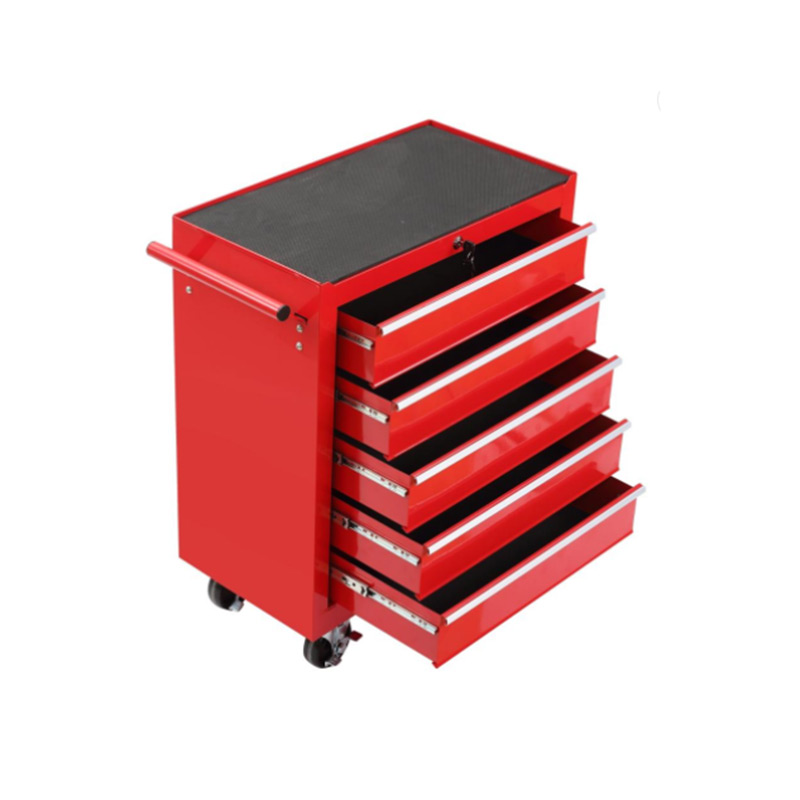The Ultimate Guide to Tool Boxes: Everything You Need to Know
2025-01-13
What is a Tool Box?
A tool box is a container used for organizing, storing, and transporting tools and other equipment. It can range from a simple, small box with compartments to a larger, more complex system with multiple drawers, shelves, and organizational features. Tool boxes are essential in homes, garages, workshops, and industrial settings to keep tools easily accessible and safe.
What Are the Different Types of Tool Boxes?
There are various types of tool boxes available, each suited for different purposes. The most common types include:
1. Handheld Tool Boxes: These are compact, portable boxes designed for easy carrying. They typically have a handle and can be used to store a small collection of tools for light tasks.
2. Rolling Tool Boxes: These tool boxes have wheels and a telescopic handle, making them easy to move around. They are perfect for professionals who need to carry larger amounts of tools or work on the go.
3. Tool Chests: These are larger, often multi-drawer boxes used for storing tools in an organized manner. They are commonly used in workshops and garages for larger collections of tools.
4. Tool Cabinets: These are similar to tool chests but often include a larger workspace, shelves, and may be wall-mounted. Tool cabinets are more permanent fixtures in a workspace.
5. Stackable Tool Boxes: These boxes are designed to be stacked on top of each other, allowing for easy transport and flexible organization. Ideal for those with a variety of tools, they help maximize space.
6. Specialized Tool Boxes: These are designed for specific tasks, such as mechanic tool boxes, electrical tool boxes, or plumber tool boxes, often with specialized compartments or inserts for particular tools.
Why is it Important to Have a Tool Box?
A tool box serves several important functions:
1. Organization: A tool box helps keep tools neatly arranged, preventing clutter in your workspace or home and making it easier to locate the tool you need.
2. Safety: Storing tools in a proper tool box prevents accidents and injuries. Sharp or heavy tools are safely stored and less likely to cause harm when handled.
3. Portability: Having a tool box allows you to easily transport your tools from one place to another, especially when working on different sites or projects.
4. Protection: A sturdy tool box protects your tools from damage, dust, and rust, ensuring they last longer and perform well.
5. Efficiency: With the right organization, a tool box saves time by keeping all the essential tools in one place, making it easier to work and finish projects faster.
What Features Should You Look for in a Good Tool Box?
When choosing the best tool box for your needs, consider these essential features:
1. Material: Tool boxes are made from various materials, including steel, plastic, aluminum, and metal composites. Steel is durable but heavy, while plastic is lightweight but may not offer the same level of protection.
2. Size and Storage Capacity: Choose a tool box that fits the number and size of tools you have. Consider your space and the need for additional storage as your collection grows.
3. Compartments and Organizers: Look for tool boxes with compartments or removable trays to help organize smaller items like screws, nails, or bits. This ensures quick access and minimizes searching.
4. Portability: If you need to move your tools frequently, opt for a tool box with handles, wheels, or even a telescopic handle to make transportation easier.
5. Locking Mechanism: For added security, some tool boxes come with locks to protect your tools, particularly if you're storing valuable equipment or working on-site.
6. Durability: A high-quality tool box should be able to withstand wear and tear. Look for reinforced corners, rust-resistant coatings, and sturdy construction to ensure the box will last.
7. Waterproofing: For those working in outdoor environments or damp spaces, waterproof tool boxes can keep tools safe from rain and humidity.
What Are the Benefits of a Rolling Tool Box?
Rolling tool boxes are designed for easy mobility, offering a range of benefits:
1. Ease of Transport: With wheels and a telescoping handle, you can move heavy loads of tools with ease, without straining your back or shoulders.
2. Ample Storage: Rolling tool boxes typically offer more storage space, with multiple compartments and large trays for easy access to tools.
3. Durability: These boxes are built to handle the rigors of frequent transport and heavy-duty use, making them perfect for professionals who need their tools on the go.
4. Versatility: Many rolling tool boxes can be stacked with other boxes for customized organization. Some even have a separate top section for quick-access items.
How Do You Organize Tools in a Tool Box?
Proper organization is key to making the most of your tool box. Here are some tips:
1. Categorize Tools: Group your tools by type or function. For example, place all your screwdrivers in one section, wrenches in another, and pliers in a third. This makes it easier to find what you need quickly.
2. Use Dividers: Many tool boxes come with removable dividers or trays. Use these to create smaller sections for screws, nuts, bolts, or other small items.
3. Keep Frequently Used Tools Accessible: Tools that you use most often should be kept in the top or easily accessible sections. This minimizes time spent searching for them.
4. Label Sections: If your tool box allows for it, label sections or drawers so you know exactly where each tool is stored.
5. Use Clear Storage: Some boxes come with transparent or see-through compartments, making it easier to identify and access your tools.
Can Tool Boxes Be Used for Purposes Other Than Tools?
Absolutely! Tool boxes are versatile and can be used for various purposes beyond storing tools, including:
1. Craft Supplies: Organize beads, paints, threads, and other craft items in a tool box to keep your supplies neat and accessible.
2. Fishing Gear: Keep your fishing hooks, lures, and other accessories in a tool box to stay organized during your fishing trips.
3. First Aid Kits: A tool box can also double as a portable first aid kit to carry medical supplies during travel or outdoor activities.
4. Hardware Storage: Store nails, screws, bolts, washers, and other small hardware items in a tool box to avoid clutter.
How Do You Maintain a Tool Box?
Proper maintenance will ensure your tool box lasts for years. Here are a few tips:
1. Clean Regularly: Keep your tool box clean by wiping it down with a damp cloth to remove dust, debris, and oil residue.
2. Check for Damage: Regularly inspect the box for signs of wear, such as rust, cracks, or broken locks. Repair or replace parts as needed.
3. Lubricate Moving Parts: For tool boxes with drawers or wheels, lubricate moving parts occasionally to ensure smooth operation.
4. Store Properly: If you're storing your tool box outside or in a damp environment, consider placing it in a dry area to prevent rusting.
Conclusion
A tool box is an essential item for anyone who wants to keep their tools organized, safe, and easily accessible. With so many types, features, and options available, choosing the right tool box depends on your specific needs. Whether you're a DIY enthusiast or a professional tradesperson, having the right tool box can help you work more efficiently and keep your workspace organized.



